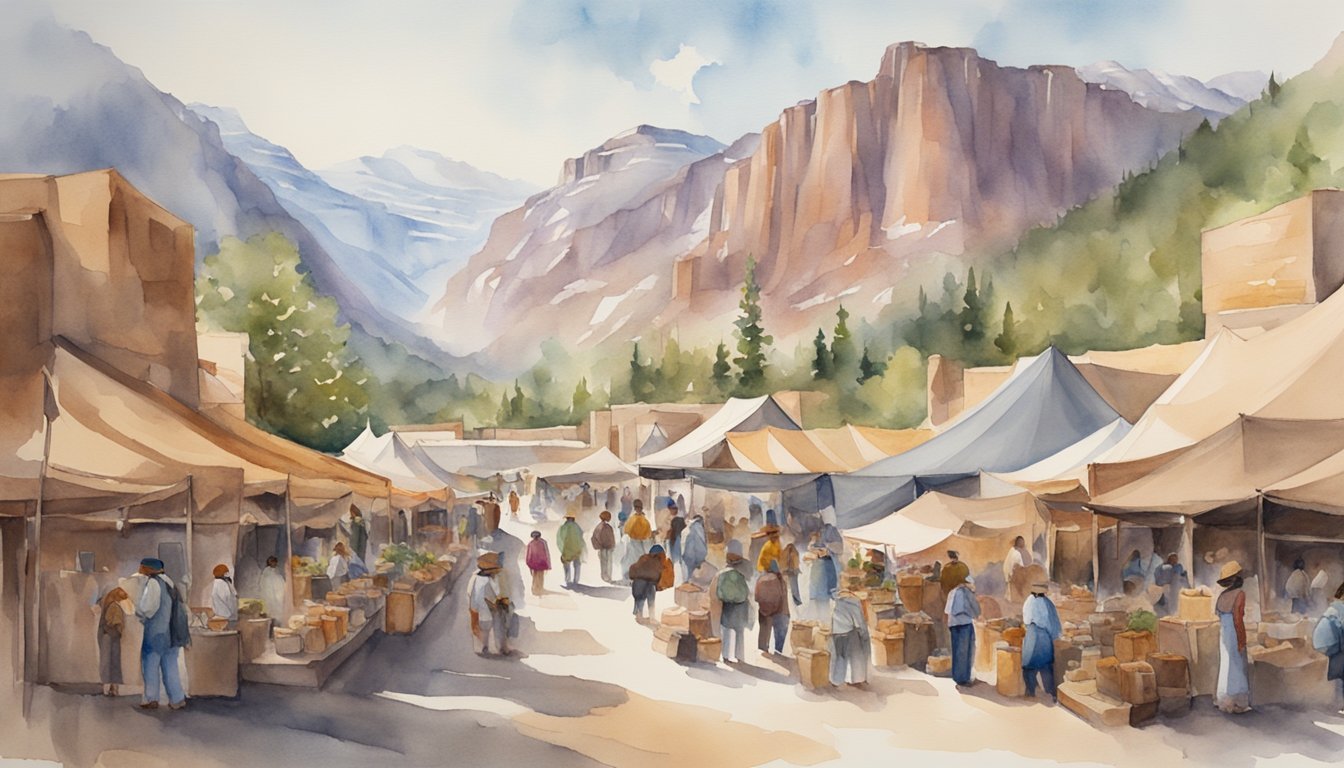Geography and Natural Features
Mountains and Peaks
Utah is known for its diverse landscape that ranges from arid deserts to pine forests in mountain valleys. It is a landlocked state located at the convergence of three distinct geological regions: the Rocky Mountains, the Great Basin, and the Colorado Plateau1. One of the notable mountain ranges in Utah is the Uinta Mountains, where Kings Peak, the highest point in the state, is located at an elevation of 13,534 feet2.
Water Bodies
There are several notable water bodies in Utah, with the Great Salt Lake being the largest saltwater lake in the Western Hemisphere3. It is a remnant of the ancient Lake Bonneville, which covered a significant part of Utah during the last Ice Age4. Other significant water bodies include Utah Lake and the Bonneville Salt Flats, an expansive area of salt-crusted ground that is a popular location for land speed records5.
National Parks
Utah is home to several national parks, showcasing the state’s unique landscapes and geological formations. Among these are: Arches National Park, known for its stunning natural arches, and Zion National Park, with its towering sandstone cliffs, are two of the most popular destinations. Visitors can also explore Bryce Canyon, famous for its distinctive hoodoos, or Canyonlands, which offers breathtaking desert vistas. For those interested in exploring beyond Utah, researching Montana facts for visitors can provide insight into another state rich in natural beauty and outdoor adventure.
- Zion National Park: Known for its red cliffs, narrow canyons, and rock formations such as The Watchman and Angels Landing6.
- Bryce Canyon National Park: Famous for its unique rock formations called hoodoos and its scenic vistas7.
- Arches National Park: Home to over 2,000 natural sandstone arches, including the famous Delicate Arch8.
Climate and Vegetation
Utah experiences a diverse climate, with distinct variations across the state. The western part of the state, including the Great Basin, is characterized by dry, arid deserts. In contrast, the eastern part, consisting of the Colorado Plateau and Rocky Mountains, is generally cooler and wetter9.
The state is home to some unique vegetation zones, such as the Cottonwood Canyons, which are renowned for aspen and spruce10. Another natural wonder in Utah is the Rainbow Bridge, one of the largest natural bridges in the world, located within the state’s Basin and Ridge region11. Additionally, Utah takes pride in its Fishlake National Forest, which offers a mix of forests, meadows, and unique geological features12.
Culture, History, and Economy

State History
Utah’s history begins with the Native American tribes that inhabited the region, such as the Ute, Goshute, Paiute, and Shoshone. The territory was later claimed by the Spanish until it was ceded to the United States following the Treaty of Guadalupe Hidalgo in 1848. The Church of Jesus Christ of Latter-day Saints (also known as Mormon Church) and its leader, Brigham Young, played an essential role in Utah’s early history. They were seeking a place to practice their religion freely, and they found it in the Salt Lake Valley in 1847. The state’s name comes from the Ute tribe, which means “people of the mountains.”
Cultural Significance
Utah is known for its strong Mormon heritage, and it’s often referred to as the Mormon State. The Church of Jesus Christ of Latter-day Saints continues to exert a significant cultural influence on the state, including the prohibition of polygamy in 1890, which paved the way for statehood in 1896. Utah’s population is overwhelmingly composed of residents who identify as Mormons (members of the Latter-day Saints church).
The state has also contributed to the arts, particularly the film industry. Utah is home to the world-renowned Sundance Film Festival, which showcases independent films and documentaries, attracting thousands of visitors every year. The picturesque landscape of Utah has also made it a popular filming location for various movies, especially westerns like ‘The Lone Ranger.’ The town of Kanab even earned the nickname “Little Hollywood” due to its frequent use as a filming location.
Economic Activities
Utah’s economy has evolved over time, shifting from agriculture-based industries to mining, steel production, and technology companies by the 1960s. Farming remains an essential part of Utah’s economy, with corn being one of its primary crops. Tourism is also a significant driver of the state’s economy, thanks in part to the numerous national parks and cultural events, such as the Sundance Film Festival.
Utah’s location in the Western United States, with borders to Colorado, Nevada, New Mexico, and Arizona, has played a critical role in its economic development. The completion of the Transcontinental Railroad facilitated its integration with the rest of the country, opening up new opportunities for trade and industry. Today, Utah’s economy is also supported by various sectors, including aerospace and defense, with the Hill Air Force Base being a significant employer in the state.
The Beehive State, as Utah is affectionately known, has a rich and diverse history, culture, and economy that continue to shape its identity. From its Native American roots to its modern-day industries, the state offers an array of attractions and experiences for both its residents and visitors alike.

